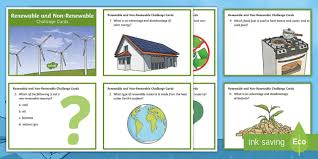Examples of Non-Renewable Resources
Non-renewable resources are natural substances that are finite in quantity and cannot be easily replaced once they are depleted. These resources play a crucial role in various industries but their overexploitation can lead to environmental degradation and energy insecurity. Here are some common examples of non-renewable resources:
-
Fossil Fuels: Coal, oil, and natural gas are the most widely used non-renewable energy sources for electricity generation, transportation, and heating.
-
Nuclear Energy: Uranium is a non-renewable resource used in nuclear power plants to generate electricity through nuclear fission.
-
Minerals: Metals such as iron, copper, gold, and silver are extracted from ores that are finite in quantity.
-
Phosphate Rock: Used in fertilizers to enhance plant growth, phosphate rock is a non-renewable resource essential for agriculture.
-
Rare Earth Elements: These elements are crucial for the manufacturing of electronics, magnets, and renewable energy technologies.
-
Natural Gas Liquids: Ethane, propane, and butane are byproducts of natural gas extraction used as feedstocks for petrochemical industries.
It is important to manage non-renewable resources responsibly and explore sustainable alternatives to reduce our dependence on them. Transitioning towards renewable energy sources and promoting circular economy practices can help mitigate the negative impacts of depleting non-renewable resources on our planet.
Understanding Non-Renewable Resources: Key Examples and Insights for Kids
- What are nonrenewable resources for kids?
- What are the 10 examples of non-renewable?
- What are the 4 non renewable resources?
- What are 5 non-renewable resources?
What are nonrenewable resources for kids?
Non-renewable resources for kids are natural materials that cannot be easily replaced once they are used up. Examples of non-renewable resources that kids may be familiar with include fossil fuels like coal, oil, and natural gas, which are used for energy and transportation. Other non-renewable resources that children may encounter in daily life include minerals like iron and copper, which are used to make everyday items such as cars and electronics. It’s important for kids to understand the finite nature of non-renewable resources and the importance of conserving them to protect the environment for future generations.
What are the 10 examples of non-renewable?
When considering examples of non-renewable resources, it’s important to recognize the finite nature of these essential substances. Commonly cited examples include fossil fuels such as coal, oil, and natural gas, which power industries and transportation globally. Additionally, uranium for nuclear energy production, metals like iron and copper, phosphate rock for fertilizers, rare earth elements vital in technology manufacturing, and natural gas liquids play significant roles as non-renewable resources. Understanding the impact of these limited resources is crucial in promoting sustainable practices and exploring alternative energy sources for a more environmentally conscious future.
What are the 4 non renewable resources?
Non-renewable resources are vital components of our modern society, yet their finite nature raises concerns about sustainability and environmental impact. When asked about the four main types of non-renewable resources, it is important to highlight the significant role played by fossil fuels such as coal, oil, and natural gas in powering industries and transportation. Additionally, minerals like iron, copper, and gold are essential for manufacturing and construction. Nuclear energy sourced from uranium is another key non-renewable resource used for electricity generation. Understanding these primary categories of non-renewable resources underscores the importance of conservation efforts and the urgent need to transition towards renewable alternatives for a more sustainable future.
What are 5 non-renewable resources?
Non-renewable resources are finite natural substances that cannot be easily replaced once depleted. Five common examples of non-renewable resources include fossil fuels such as coal, oil, and natural gas, which are essential for energy production and transportation. Additionally, minerals like iron, copper, and gold are extracted from finite ores. Uranium is another non-renewable resource used in nuclear power generation. Phosphate rock, vital for agricultural fertilizers, and rare earth elements crucial for various industries are also notable non-renewable resources. Managing these resources sustainably and transitioning to renewable alternatives are essential steps towards a more environmentally conscious future.

